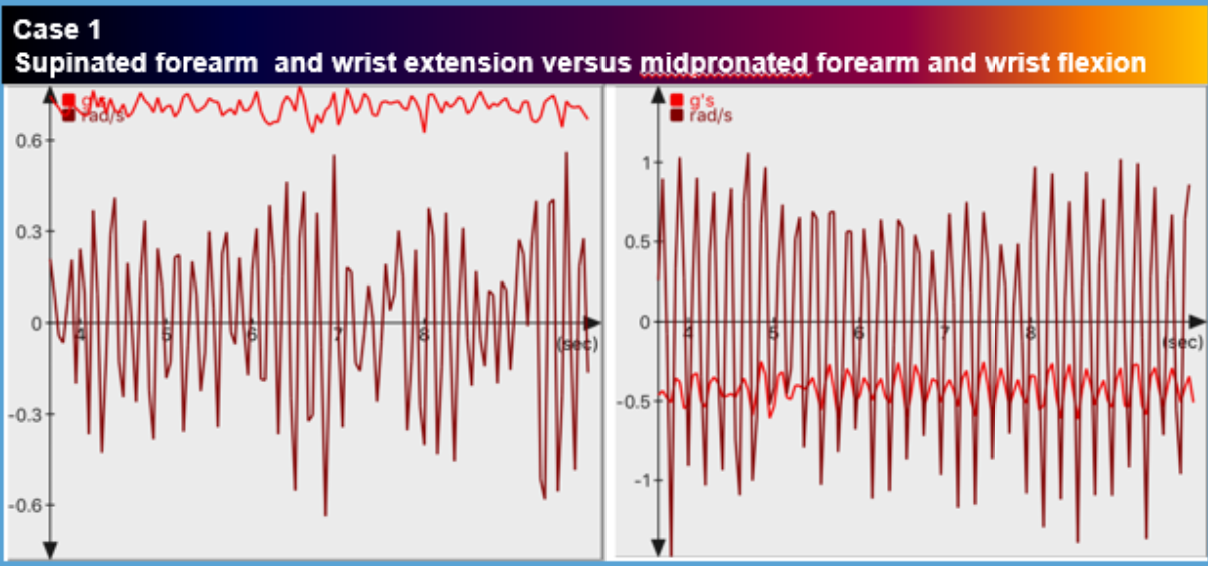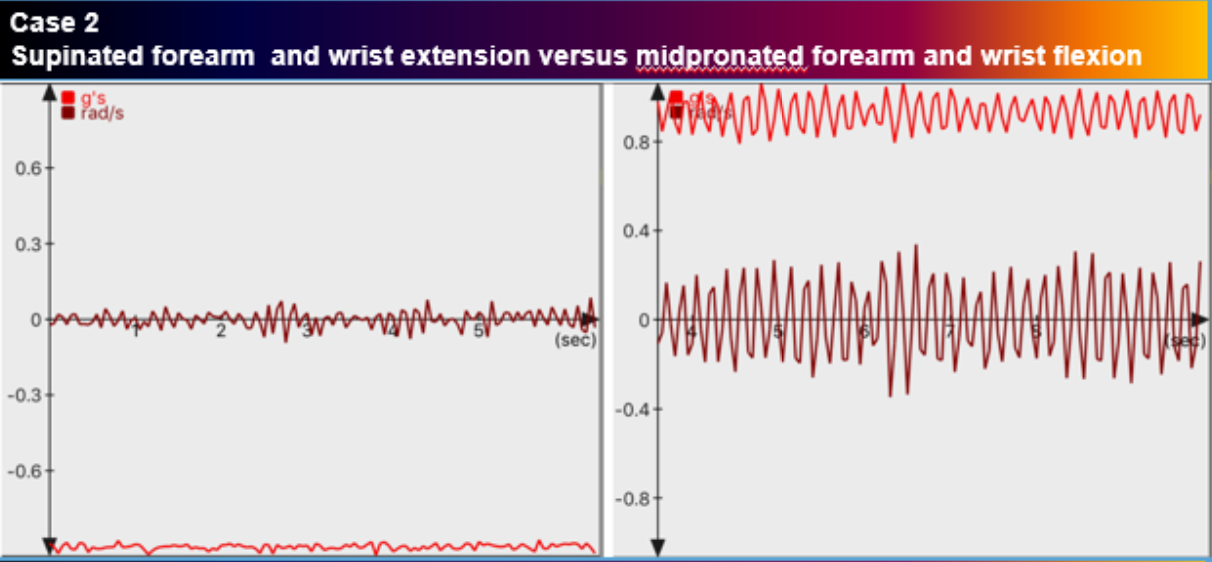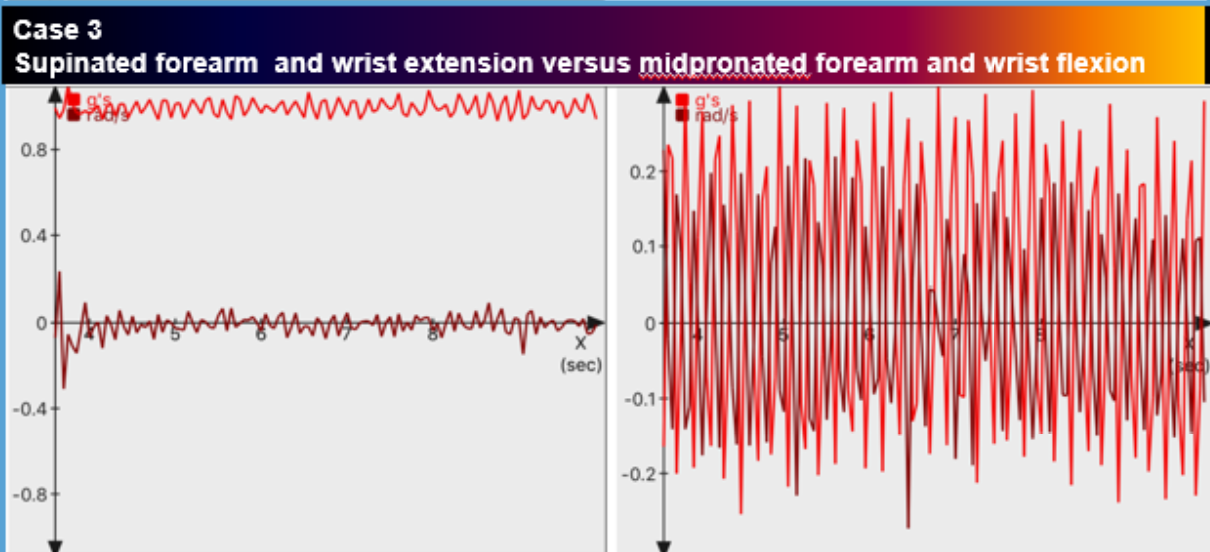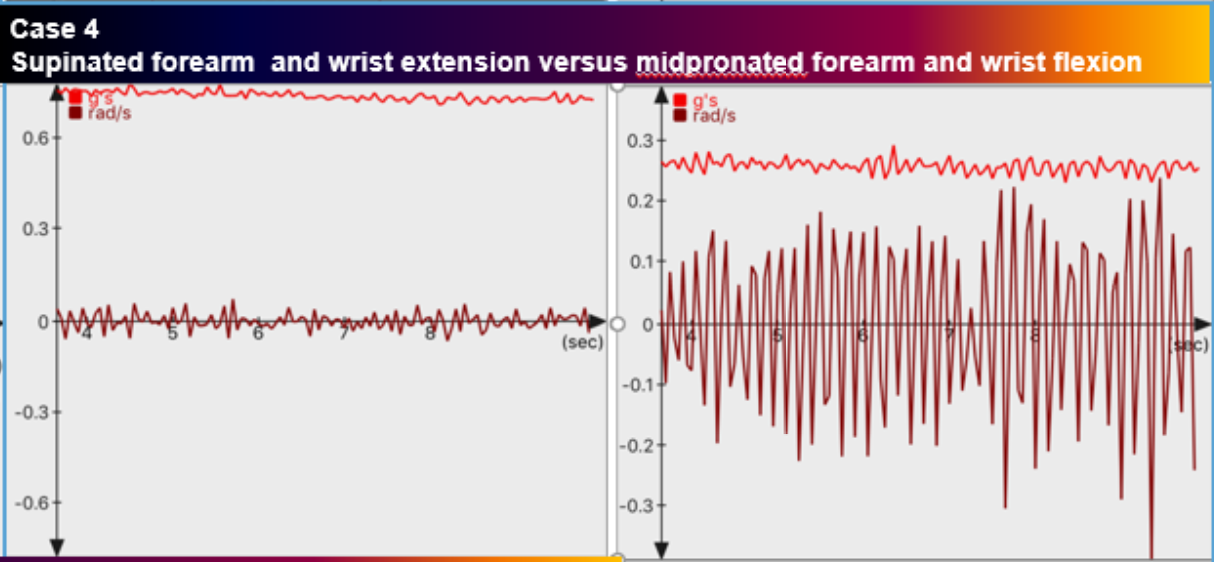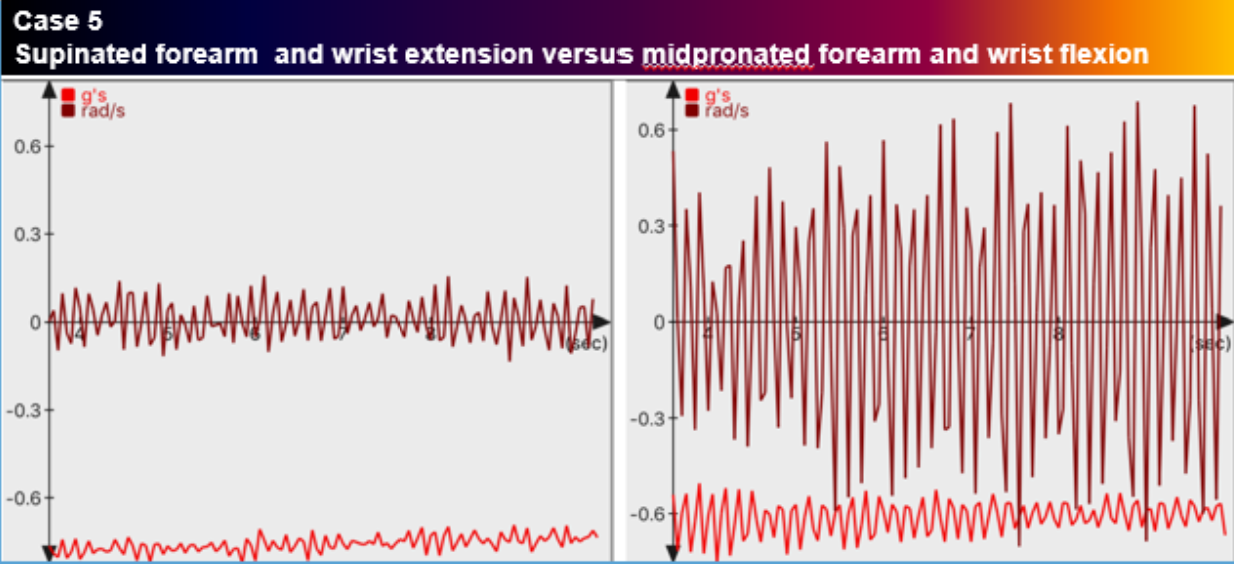Category: Tremor
Objective: Characterize the positionality of upper limb tremor in clinical practice.
Background: The MDS tasks force on tremor defines tremor as an involuntary, rhythmic, oscillatory movement of a body part classified along two axes based on clinical characteristics and etiology5. This system allows for classification into various tremor subtypes and good description of specific tremor disorders. However, there are no studies looking at the variability of the tremor in positions other than resting, postural kinetic features and the potential impact or utility in tremor rehabilitation or adaptation.
Upper limb tremor amplitude and intensity display significant variability not only situational (stress, anxiety or fatigue) but with hand/arm position. This at times results in the wrong diagnosis of a functional etiology – functional or psychogenic tremor. There have been no formal studies characterizing this variability or positionality of upper limb tremor. Variability in amplitude and intensity are often considered to support a psychosomatic or functional tremor etiology and hence can result in wrong diagnosis. We demonstrate this positionality in five clinical cases previously diagnosed as essential tremor and hypothesize that this is not an common feature of dystonic, familial or essential tremor.
Method: Five patients aged 22 to 85 years were assessed using iphone accelerometry and gyroscopic data. The MATLAB mobile app was utilized. The data was obtained in two cardinal forearm and wrist positions: Combined forearm supination and wrist extension versus combined forearm mid-pronation and wrist flexion. The accelerometer data expressed in milli-Gs (mGs) and gyroscopic data in rad/s.
Results: The difference between combined forearm supination and wrist extension versus combined forearm pronation and wrist flexion ranged between 10 and 290 mGs with combined forearm supination and wrist extension being significantly less tremulous in all five cases (table 1).
Conclusion: This case series demonstrates the variability in tremor amplitudes in specific hand and arm positions. These findings have both adaptive and rehabilitative implications for the patients including altering grip or arm positions/posture to minimize the interfering impact of the tremor. We also suggest that this be taken into consideration especially when making the diagnosis of a functional or psychogenic tremor to reduce the risk of a wrong diagnosis.
References: 1. Bhatia K.P., Bain P., Bajaj N., Elble R.J., Hallett M., Louis E.D., Raethjen J., Stamelou M., Testa C.M., Deuschl G. Consensus Statement on the classification of tremors. From the task force on tremor of the International Parkinson and Movement Disorder Society. Mov. Disord. 2018;33:75–87
To cite this abstract in AMA style:
J. Anang. Positional variability in upper limb tremor in both essential and dystonic tremor: A case series [abstract]. Mov Disord. 2020; 35 (suppl 1). https://www.mdsabstracts.org/abstract/positional-variability-in-upper-limb-tremor-in-both-essential-and-dystonic-tremor-a-case-series/. Accessed April 17, 2025.« Back to MDS Virtual Congress 2020
MDS Abstracts - https://www.mdsabstracts.org/abstract/positional-variability-in-upper-limb-tremor-in-both-essential-and-dystonic-tremor-a-case-series/


